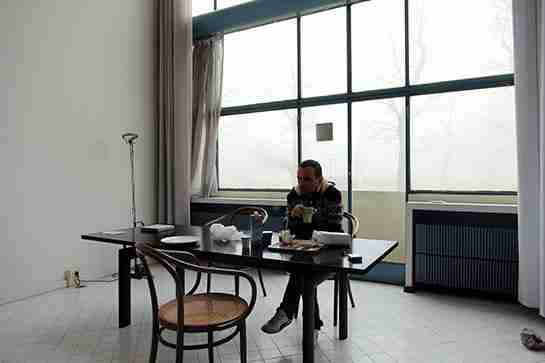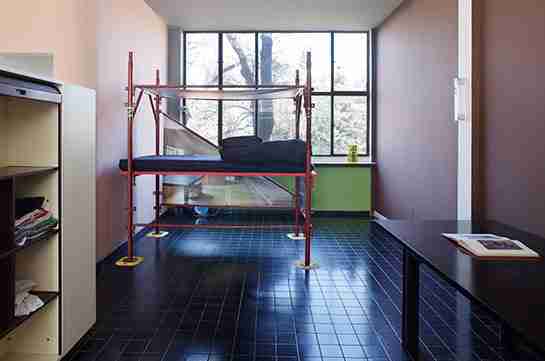Sardinian artist Cristian Chironi’s plans for the coming years include living in some 30 homes in 12 countries, but to call him a nomad would not be entirely accurate. His wandering is part of a project called “My House Is a Le Corbusier,” and it is less about drifting than it is about dwelling. At every stop along his journey, Chironi will inhabit a Le Corbusier–designed building, with each period of residence characterized by the building’s specific structure, urban environment, and various visitors. Within the renowned domiciles, Chironi will live, work, tell stories, and interact with guests, all in the hope of refiguring the legacy of Le Corbusier and reconsidering architecture today.

For the artist, this perambulation through time and space is more than just a pilgrimage or an homage to the late architect: It is a living performance. Conceived at a time of market instability and high mortgage rates, “My House Is a Le Corbusier” takes architecture as social theory, with Le Corbusier as its modern progenitor. Bartering for the right to live—for free—within these celebrated walls, Chironi reveals the arbitrary nature of the way space is valued and allocated on a global scale.

Chironi will not be alone in the Le Corbusiers; he invites in the world. By moving in and hosting others, Chironi injects these hallowed spaces—many of them long uninhabited—with literal life, imagining them as living artworks informed by different cultures, languages, identities, and geographies.
After spending January in the Pavillon de l’Esprit Nouveau in Bologna, Italy, Chironi now looks to Paris, where he will occupy the Le Corbusier studio apartment on rue Nungesser et Coli in April. “The recent, dramatic news events in Paris . . . led me to reflect,” he said. “We must return to build a house for man, where man can return to live in freedom and in equality.”
